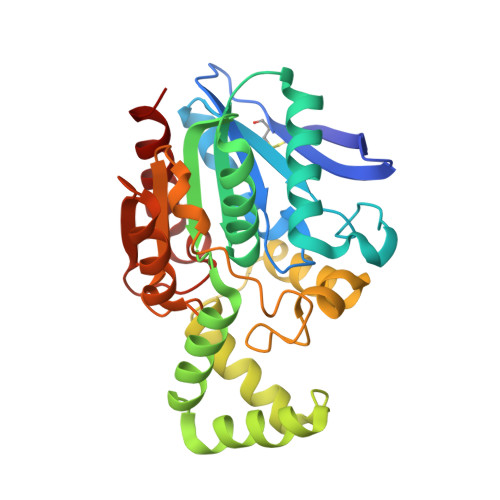X-ray snapshots of peptide processing in mutants of tricorn-interacting factor F1 from Thermoplasma acidophilum
Goettig, P., Brandstetter, H., Groll, M., Goehring, W., Konarev, P.V., Svergun, D.I., Huber, R., Kim, J.-S.(2005) J Biol Chem 280: 33387-33396
- PubMed: 15994304
- DOI: https://doi.org/10.1074/jbc.M505030200
- Primary Citation of Related Structures:
1XQV, 1XQW, 1XQX, 1XQY, 1XRL, 1XRM, 1XRN, 1XRO, 1XRP, 1XRQ, 1XRR - PubMed Abstract:
The tricorn-interacting factor F1 of the archaeon Thermoplasma acidophilum cleaves small hydrophobic peptide products of the proteasome and tricorn protease. F1 mutants of the active site residues that are involved in substrate recognition and catalysis displayed distinct activity patterns toward fluorogenic test substrates. Crystal structures of the mutant proteins complexed with peptides Phe-Leu, Pro-Pro, or Pro-Leu-Gly-Gly showed interaction of glutamates 213 and 245 with the N termini of the peptides and defined the S1 and S1' sites and the role of the catalytic residues. Evidence was found for processive peptide cleavage in the N-to-C direction, whereby the P1' product is translocated into the S1 site. A functional interaction of F1 with the tricorn protease was observed with the inactive F1 mutant G37A. Moreover, small angle x-ray scattering measurements for tricorn and inhibited F1 have been interpreted as formation of transient and substrate-induced complexes.
Organizational Affiliation:
Max-Planck-Institut für Biochemie, Abteilung Strukturforschung, Am Klopferspitz 18, D-82152 Martinsried, Germany. goettig@biochem.mpg.de















